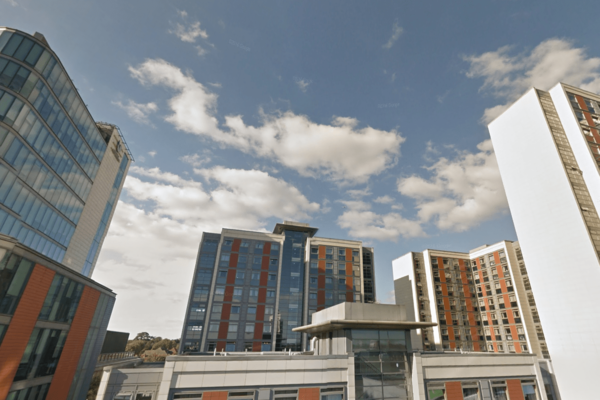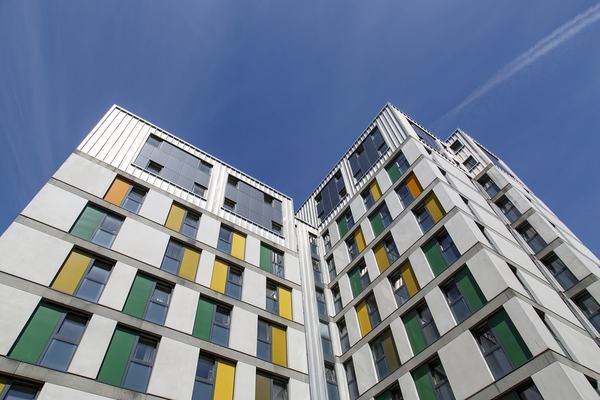You are viewing 1 of your 1 free articles
Research estimates further 1,678 buildings contain combustible materials
There are likely to be at least 1,678 buildings with combustible materials on their facades not included in government statistics because they use different materials to Grenfell Tower, research has estimated.
Analysis of publicly available data by the insulation manufacturer Rockwool estimated that at least 2,135 high-rise and high-risk buildings have combustible materials on their facades.
Since Grenfell, the government has focused on buildings with aluminium composite material (ACM) cladding which was used on the facade of the tower and helped the flames spread with devastating consequences.
It has identified 457 such buildings, of which 155 are undergoing remediation work to make them safe.
However, the government has not made any attempt to calculate the number of buildings with other kinds of combustible cladding materials, such as high-pressure laminate or those with combustible insulation or combustible window panels.
Nor has it calculated the number of high-risk buildings which are not high-rises and are clad in ACM.
Its proposed ban on combustible materials on the outside of buildings would cover these materials but would not apply to existing buildings – meaning there would be no pressure on building owners to identify or remove them if necessary.
Rockwool’s analysis, which it has submitted to the Ministry of Housing, Communities and Local Government (MHCLG), took publicly available information from the Glenigan construction database to give a total number of new build and refurbishment projects of high rise and high risk from the past five years.
Using market share information, it estimated that 90% of these would have combustible insulation, giving a total figure of 2,135, of which 457 are accounted for by the government’s figures on high-rise buildings with ACM cladding.
Of the remaining 1,678, 340 are high-rise buildings with non-ACM combustible materials in their facades, while 1,338 are other high-risk buildings with combustible materials, both ACM and non-ACM.
Darryl Matthews, managing director at Rockwool, which manufactures and sells non-combustible insulation, said: “This data shows that there are still large numbers of high-risk, as well as high-rise, buildings wrapped in materials that can fuel fires.
“The next step is a full audit of all buildings in the country to establish all the materials, not just ACM cladding, that they use on their external walls.”
High-risk buildings include those holding vulnerable people that would be difficult to evacuate in a fire such as hospitals, schools and care homes, while high rises are identified as buildings above 18m.
The government does not collect information on high-risk buildings such as hospitals that are not high-rise buildings, even if they are clad in ACM.
Housing secretary James Brokenshire said: “I have asked the independent expert panel to review [its] guidance and ensure it is still appropriate today.”
Glenigan only gives information per project, not per building and since many projects will include more than one block, Rockwool believes this number is likely to be an underestimate.
It has submitted a list of 69 projects it has specifically identified as using non-ACM combustible materials in facades.
One of these is the Charlemont Farm Estate, where four nine-storey blocks owned by Sandwell Council were clad in a high-pressure laminate material which is combustible.
A Sandwell Council spokesman said: “We are examining the claims that have been made by one supplier of cladding material about the materials that are provided by one of their competitors. These materials have not been declared to be unsafe by the Government.”
Update: at 16.13 on 28.11.18 This story was updated to clarify that the government does not collect data on high-risk buildings that are not high-rises, even if they are clad in ACM.
Update: at 14.02 on 29.11.18 This story was updated to include a comment from Sandwell.
Never Again campaign
In the days following the Grenfell Tower fire on 14 June 2017, Inside Housing launched the Never Again campaign to call for immediate action to implement the learning from the Lakanal House fire, and a commitment to act – without delay – on learning from the Grenfell Tower tragedy as it becomes available.
One year on, we have extended the campaign asks in the light of information that has emerged since.
Here are our updated asks:
GOVERNMENT
- Act on the recommendations from Dame Judith Hackitt’s review of building regulations to tower blocks of 18m and higher. Commit to producing a timetable for implementation by autumn 2018, setting out how recommendations that don’t require legislative change can be taken forward without delay
- Follow through on commitments to fully ban combustible materials on high-rise buildings
- Unequivocally ban desktop studies
- Review recommendations and advice given to ministers after the Lakanal House fire and implement necessary changes
- Publish details of all tower blocks with dangerous cladding, insulation and/or external panels and commit to a timeline for remedial works. Provide necessary guidance to landlords to ensure that removal work can begin on all affected private and social residential blocks by the end of 2018. Complete quarterly follow-up checks to ensure that remedial work is completed to the required standard. Checks should not cease until all work is completed.
- Stand by the prime minister’s commitment to fully fund the removal of dangerous cladding
- Fund the retrofitting of sprinkler systems in all tower blocks across the UK (except where there are specific structural reasons not to do so)
- Explore options for requiring remedial works on affected private sector residential tower blocks
LOCAL GOVERNMENT
- Take immediate action to identify privately owned residential tower blocks so that cladding and external panels can be checked
LANDLORDS
- Publish details of the combinations of insulations and cladding materials for all high rise blocks
- Commit to ensuring that removal work begins on all blocks with dangerous materials by the end of 2018 upon receipt of guidance from government
- Publish current fire risk assessments for all high rise blocks (the Information Commissioner has required councils to publish and recommended that housing associations should do the same). Work with peers to share learning from assessments and improve and clarify the risk assessment model.
- Commit to renewing assessments annually and after major repair or cladding work is carried out. Ensure assessments consider the external features of blocks. Always use an appropriate, qualified expert to conduct assessments.
- Review and update evacuation policies and ‘stay put’ advice in the light of risk assessments, and communicate clearly to residents
- Adopt Dame Judith Hackitt’s recommended approach for listening to and addressing tenants’ concerns, with immediate effect
CURRENT SIGNATORIES:
- Chartered Institute of Housing
- G15
- National Federation of ALMOs
- National Housing Federation
- Placeshapers
The Paper Trail: The Failure of Building Regulations
Read our in-depth investigation into how building regulations have changed over time and how this may have contributed to the Grenfell Tower fire:











